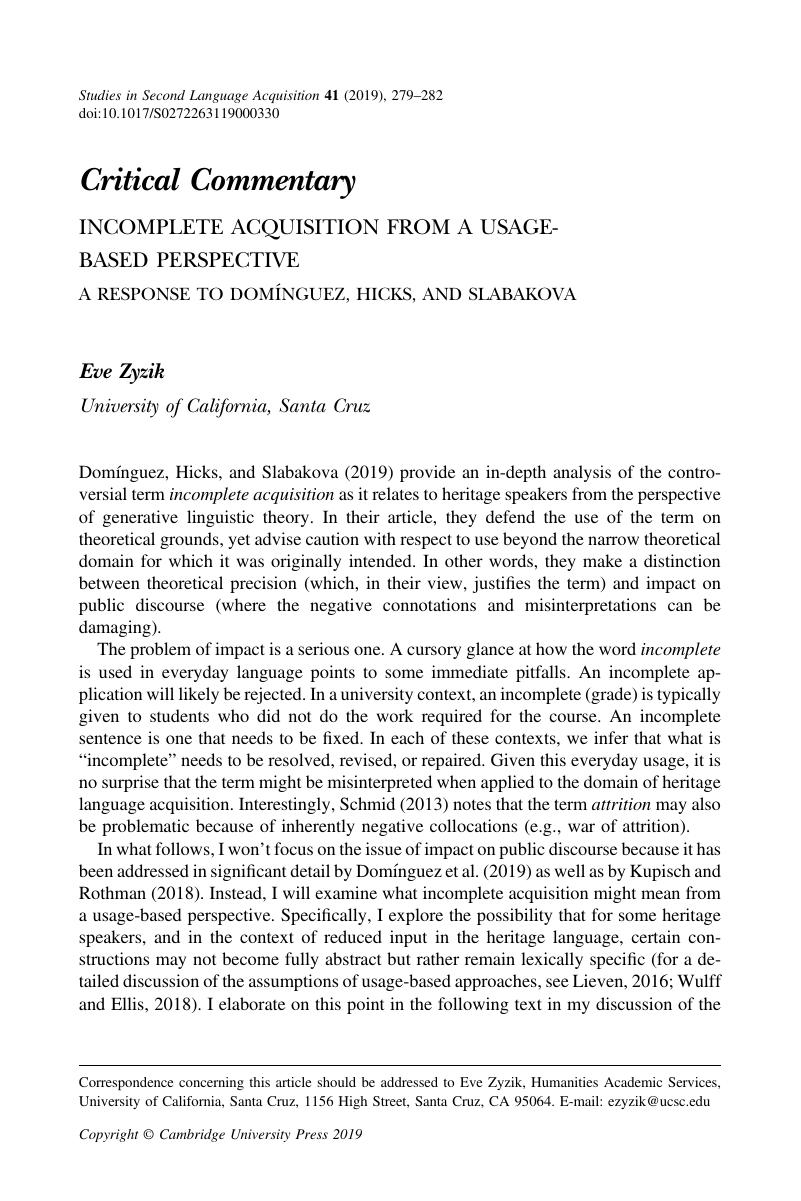Crossref Citations
This article has been cited by the following publications. This list is generated based on data provided by Crossref.
Prada Pérez, Ana de
Gómez Soler, Inmaculada
and
Feroce, Nick
2021.
Variable Future-Time Expression in Spanish: A Comparison between Heritage and Second Language Learners.
Languages,
Vol. 6,
Issue. 4,
p.
206.
Shin, Naomi
2022.
Structured variation in child heritage speakers' grammars.
Language and Linguistics Compass,
Vol. 16,
Issue. 12,
Perez-Cortes, Silvia
and
Giancaspro, David
2022.
(In)frequently asked questions: On types of frequency and their role(s) in heritage language variability.
Frontiers in Psychology,
Vol. 13,
Issue. ,



